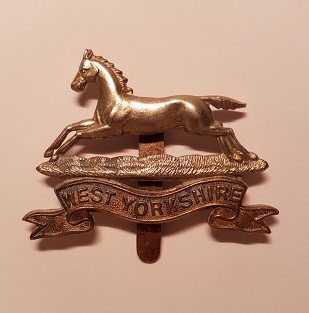This page is based on this
Wikipedia article Text is available under the
CC BY-SA 4.0 license; additional terms may apply.
Images, videos and audio are available under their respective licenses.
In Japanese, sentai (戦隊) is a military unit and may be literally translated as "squadron", "task force", "group" or "wing". The terms "regiment" and "flotilla", while sometimes used as translations of Sentai, are also used to refer to larger formations.

The West Yorkshire Regiment was an infantry regiment of the British Army. In 1958 it amalgamated with the East Yorkshire Regiment to form the Prince of Wales's Own Regiment of Yorkshire which was, on 6 June 2006, amalgamated with the Green Howards and the Duke of Wellington's Regiment to form the Yorkshire Regiment.

The Imperial Japanese Army Air Service or Imperial Japanese Army Air Force or, more literally, the Greater Japan Empire Army Air Corps, was the aviation force of the Imperial Japanese Army (IJA). Just as the IJA in general was modeled mainly on the German Army, the IJAAS initially developed along similar lines to the Imperial German Army Aviation; its primary mission was to provide tactical close air support for ground forces, as well as a limited air interdiction capability. The IJAAS also provided aerial reconnaissance to other branches of the IJA. While the IJAAS engaged in strategic bombing of cities such as Shanghai, Nanking, Canton, Chongqing, Rangoon, and Mandalay, this was not the primary mission of the IJAAS, and it lacked a heavy bomber force.
The Kita and Minami Fortresses were defensive structures of the Imperial Japanese Army and Imperial Japanese Navy in the Kuril Archipelago.
Organization of Japanese forces in the South-East Asian theatre of World War II.

The Battle of South Shanxi, also known as the Battle of Jinnan and Zhongtiao Mountains Campaign by the Chinese and as the Chungyuan Operation by the Japanese, was one of the 22 major engagements between the National Revolutionary Army and the Imperial Japanese Army during the Second Sino-Japanese War (1937–1945).

The 2nd Tatsinskaya Guards Tank Corps was a Red Army tank corps that saw service during World War II on the Eastern Front. After the war it continued to serve with Soviet occupation forces in Central Europe. It was originally the 24th Tank Corps. The unit had approximately the same size and combat power as a Wehrmacht Panzer Division, and less than a British Armoured Division had during World War II.
The order of battle for Operation Chahar, in the history of the Second Sino-Japanese War (1937–1945), was:
Battle of Wuhan or the Wuchang-Hankou Campaign Order of battle, (early June - November 12, 1938)
The Order of Battle for the Nanchang Campaign
The Order of Battle for the Battle of South Guangxi by country is as follows:
This is the order of battle for the Japanese invasion of French Indochina during World War II.
Below is the order of battle for the Canton Operation, October to December 1938 during the Second Sino-Japanese War.
Peiking Tientsin Operation from the Battle of Beiping-Tianjin in the Second Sino-Japanese War.
The Order of Battle Peiking–Hankou Railway Operation
Order of battle for the Battle of Taiyuan in the Second Sino-Japanese War.
The Battle of Xuzhou was fought in May 1938 as part of the Second Sino-Japanese War.
The Second Battle of El Alamein order of battle is a listing of the significant formations that were involved in the Second Battle of El Alamein during the Western Desert Campaign of the Second World War, 23 October – 4 November 1942.

The 25th Indian Infantry Division was an infantry division of the Indian Army during World War II which fought in the Burma Campaign. It was re-raised within the post-independence Indian Army in 1948.
Tsaoyang-Yichang Campaign 1 May – 18 June 1940













